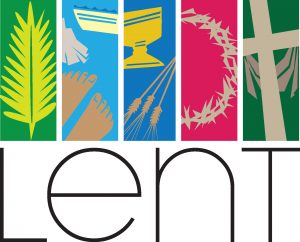 What is Lent? We’ve all heard the word, and we know it occurs in the weeks and days that lead up to Palm Sunday, Maundy Thursday, Good Friday, and ultimately, Easter.
What is Lent? We’ve all heard the word, and we know it occurs in the weeks and days that lead up to Palm Sunday, Maundy Thursday, Good Friday, and ultimately, Easter.
Lent is an Anglo-Saxon word meaning lengthen, as in when the days lengthen in the spring; it became associated with rites of preparation that early Christians practiced prior to Easter, the great celebration of Jesus’s resurrection. As early as the second century believers prepared for Easter by observing times of fasting and prayer. It is commonly believed that the period of 40 days associated with Lent was to commemorate the 40 days that Jesus spent in the wilderness.
If you count the days between Ash Wednesday and Easter, you’ll discover there are actually 46 days. Our Christian predecessors believed that Sunday should never be used as a fast day. Jesus’ resurrection was on a Sunday, so all Sundays were to be considered mini-feast days, thus we don’t include six Sundays as part of the 40 days of Lent.
Since many converts to Christianity were Jewish, the observation of Passover also took on additional meaning. Passover commemorated the liberation of the ancient Hebrews from the yoke of Egyptian slavery. It was also during Passover that Jesus was arrested, tried, crucified, and resurrected.
Easter is always observed within a 35-day “window” between March 22nd and April 25th in order to coincide with Passover. Easter and Passover aren’t always observed during the same dates, because the observation of Passover is based on the lunar calendar and Easter is based on the solar calendar. Easter is observed on the first Sunday following the first full moon after the vernal equinox (also known as the first day of spring).
During Christianity’s early years, Lent was also a time of intense preparation for those wishing to join the church. Catechisms were learned and new converts were baptized in a river or lake at dawn on Easter morning. I suspect we wouldn’t have too many new baptisms if we still embraced the same tradition.
Not too long ago, a child asked me, “Why do we call it Easter?” I sagely replied, “Uh, er, I’ll have to get back to you on that.” After doing some research, I discovered that Easter is derived from the Scandinavian word “Ostra” and the Teutonic “Ostern” or “Eastre,” both of whom were mythical goddesses of fertility whose celebrations were held on the first day of spring. Rabbits became associated with the celebration of Easter because they were a time-honored symbol of fertility (and anyone who has ever owned or observed rabbits knows why!). Eggs were also a symbol of fertility and were painted in bright colors to signify the bright sunlight of spring following the long darkness of winter. They were given as tokens of affection and used in egg rolling contests.
So, as with our Advent celebration, Christians assimilated many cultural traditions into their Lenten and Easter observations. Just as early Christians were able to incorporate many diverse elements into their faith tradition, let us join together in celebrating the wonderful diversity that all brothers and sisters in Christ bring to our celebration of Christ’s triumph over the grave.
In Christ,
Pastor Sharon

Leave A Comment